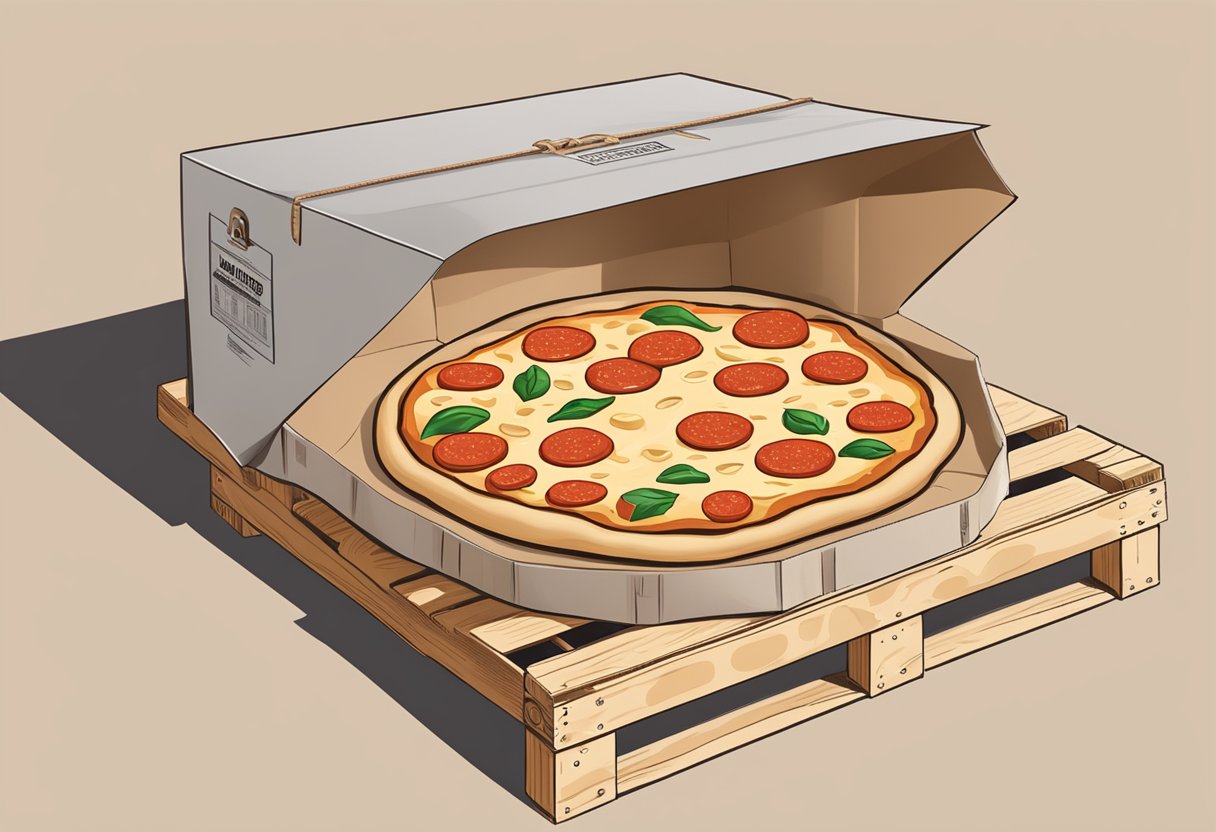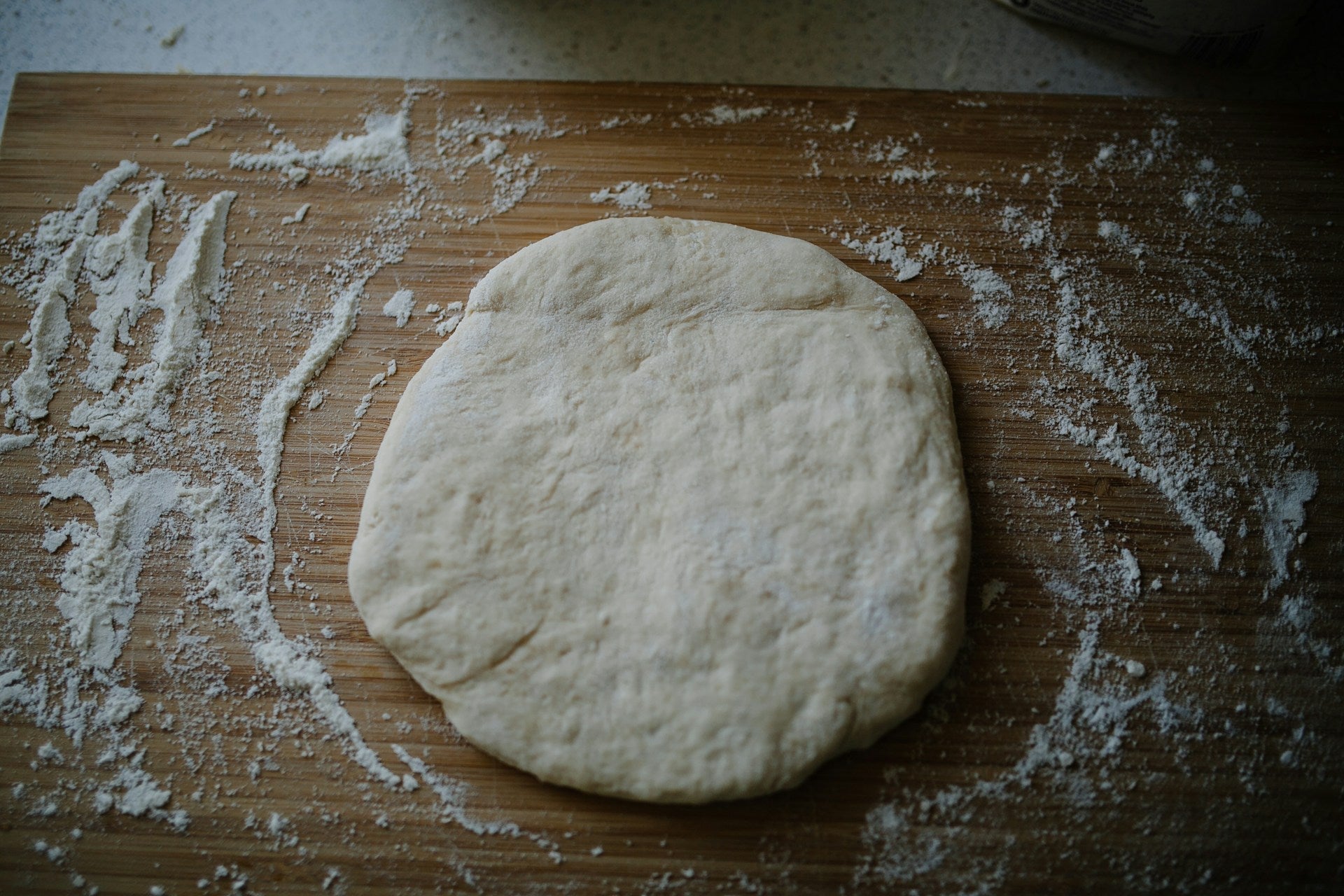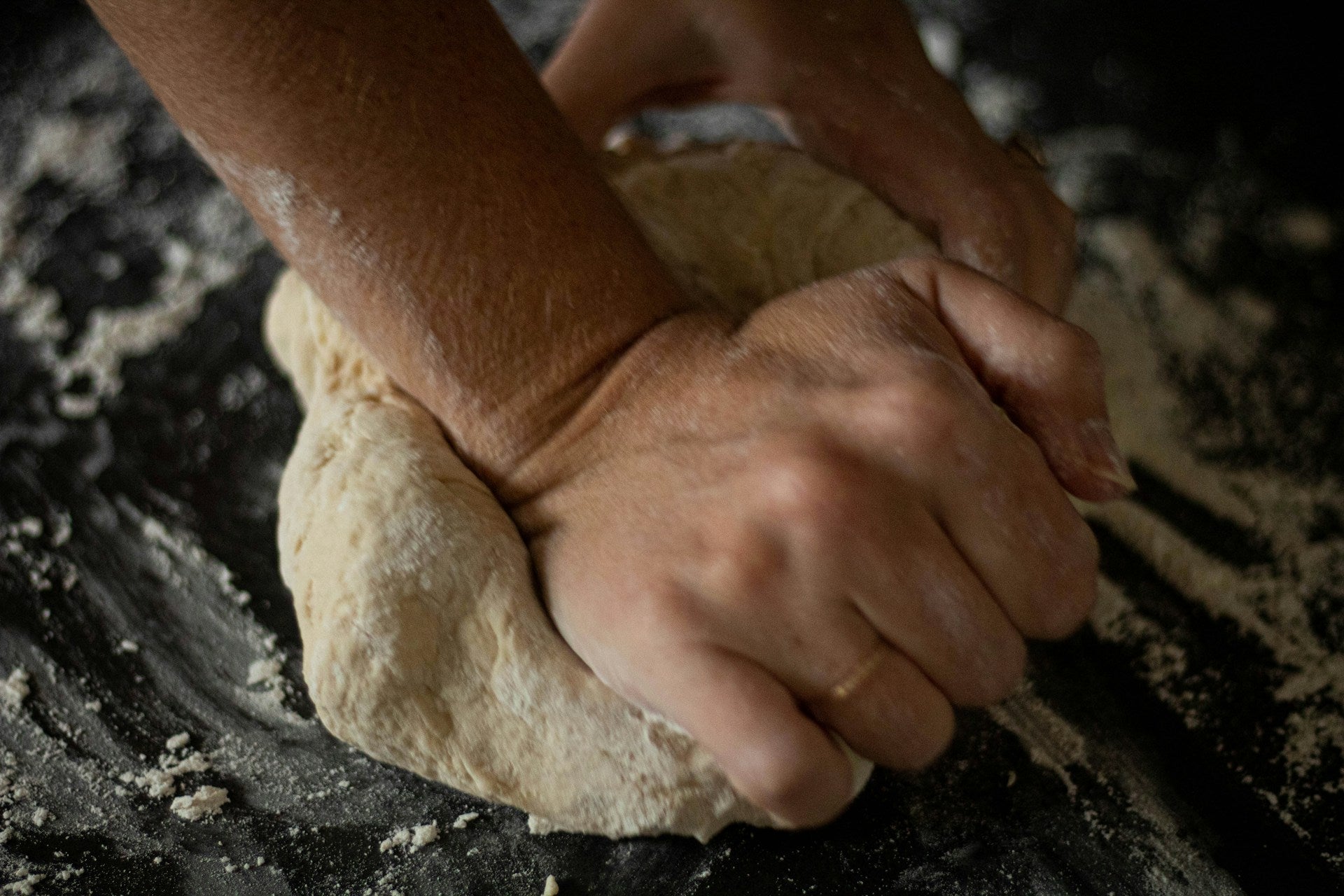
Pizza Dough Shipped: Fresh, Ready-to-Use Options for Home Cooks
When you're ready to make your perfect pizza at home, knowing where to find quality pizza dough shipped directly to you is essential. With the right dough, you can achieve the desired chew and consistency that makes a great pizza crust. Having fresh, premade pizza dough delivered to your doorstep allows you to skip the tedious preparation and focus on the fun of baking.
You can choose from various options, including Neapolitan-style and New York-style dough, each offering unique textures and flavors. These products are designed to provide an authentic pizza experience that rivals your favorite pizzeria. By opting for shipped dough, you gain access to high-quality ingredients without the hassle of making it from scratch.
Imagine the satisfaction of pulling a beautifully baked pizza from your oven, with a perfect golden crust and delightful toppings. The convenience of having fresh dough shipped to you ensures that you can create delicious pizzas anytime, making it a simple yet rewarding addition to your culinary repertoire.
History and Evolution of Pizza Dough
Pizza dough has a rich history that spans centuries, originating from ancient civilizations. The development of ingredients such as wheat flour and the introduction of yeast significantly influenced the evolution of pizza dough into the form you know today.
Ancient Origins
The earliest forms of pizza dough can be traced back to ancient civilizations like the Egyptians, Greeks, and Romans. They created flatbreads using simple ingredients. These flatbreads served as a versatile base for various toppings.
Ancient people used emmer wheat, a precursor to modern wheat, to make these breads. They would season them with herbs and bake them in clay ovens. The idea of combining bread with toppings laid the groundwork for what would eventually evolve into pizza.
Development of Yeast-Leavened Bread
With time, the technique of leavening bread using yeast became prominent. Yeast, a vital ingredient, allowed dough to rise and develop a lighter texture compared to its flatbread predecessors. This shift was crucial in enhancing the dough's taste and quality.
In the 19th century, Neapolitan bakers perfected this method, using finely milled wheat flour for a smooth texture and adding specific yeast strains for consistency. This led to the creation of the classic Neapolitan pizza dough. Its successful adaptation and popularity in the United States in the 20th century further transformed pizza dough into a staple in kitchens worldwide.
Fundamentals of Pizza Dough
Understanding the fundamentals of pizza dough is essential for creating delicious pizzas. Key ingredients, the role of gluten, and yeast fermentation all play a crucial part in achieving the perfect texture and flavor.
Key Ingredients
The primary ingredients in pizza dough include wheat flour, water, yeast, salt, and sugar. Each component contributes to the dough's structure and flavor profile.
- Wheat Flour: Use high-quality flour with a higher protein content for better gluten development. Bread flour is often preferred for its elasticity.
- Water: The right amount of water affects the dough's consistency. Typically, a hydration level of about 60-65% is ideal for a balanced dough.
- Yeast: This ingredient is critical for fermentation and leavening, creating airy pockets within the dough.
- Salt: It enhances flavor and controls yeast activity, ensuring even fermentation.
- Sugar: A small amount can help activate yeast and add a hint of sweetness.
The Role of Gluten
Gluten is a natural protein that forms when flour is mixed with water. It provides the dough with its structure and elasticity. This is crucial for achieving that desirable chewy texture in your pizza crust.
When you knead the dough, gluten strands develop and become stronger. This elasticity allows the dough to stretch without tearing, helping it hold its shape during baking.
A well-kneaded dough will result in a crispy crust that can support toppings without becoming soggy. To test if your dough has developed enough gluten, try the "windowpane" test: stretch a small piece of dough. If it stretches thin without breaking, you've achieved the right gluten development.
Yeast and Fermentation
Yeast is a living organism that consumes sugars, producing carbon dioxide and alcohol. This process is known as fermentation, which helps the dough rise and develop complex flavors.
You can use different types of yeast, including active dry, instant, or fresh yeast. Each type requires different handling and activation methods.
Fermentation times vary based on recipe and ambient conditions. A longer fermentation allows for more flavor development, with some doughs resting for up to 72 hours. During this time, the flavors meld, resulting in a richer taste.
Preparing and Shipping Pizza Dough
Preparing and shipping pizza dough involves several crucial steps to maintain its quality and ensure that it arrives in perfect condition. Understanding the nuances of dough preparation, packaging, and temperature control is essential for a successful shipment.
Dough Preparation Techniques
Start with high-quality ingredients to create your pizza dough. Use bread flour for a higher protein content, which leads to better gluten development.
- Mixing: Combine flour, water, yeast, and salt in a mixing bowl. Opt for a stand mixer for consistent results.
- Kneading: Knead until the dough is smooth and elastic, approximately 10 minutes. This enhances the dough's structure.
- Proofing: Allow the dough to rise in a warm place until doubled in size. This usually takes 1–2 hours.
- Dividing: Once proofed, divide the dough into individual pizza dough balls. Each ball should weigh around 8 ounces for standard pizzas.
Ensure that each dough ball is properly shaped and allowed to relax briefly before shipping.
Packaging for Freshness
Proper packaging is essential for maintaining the freshness of your dough during transit.
- Plastic Wrap: Wrap each individual dough ball in plastic wrap to prevent drying out. Ensure it’s airtight.
- Container: Place the wrapped dough balls in airtight containers or resealable bags. This extra layer protects against contamination.
- Labeling: Clearly label each package with the contents and date. This helps keep track of freshness during shipment.
Using insulated shipping boxes can further help in maintaining the temperature of the dough during transit.
Temperature and Transit Considerations
Temperature control during shipping is critical for preserving the integrity of your pizza dough.
- Cooler Conditions: Ideally, you want to keep the dough at a temperature between 35°F and 45°F. This helps maintain yeast activity without risking spoilage.
- Ice Packs: Incorporating ice packs or dry ice can assist in maintaining the required temperature during shipping.
- Transit Time: Consider the approximate transit time and choose methods that minimize exposure to heat. Rapid transportation methods are preferable to ensure quality.
Balancing these factors will ensure that your pizza dough arrives ready to be baked and enjoyed.
Versatility of Pizza Dough
Pizza dough offers incredible versatility in the kitchen. It can be transformed into various delicious products beyond traditional pizza, making it a fantastic addition to your culinary repertoire. You can create savory items like calzones and breadsticks, or experiment with styles like focaccia, showcasing your creativity.
From Calzones to Breadsticks
Calzones are a delicious way to use pizza dough. This folded pizza keeps toppings contained, making it easy to handle and eat. You can fill it with cheese, meats, and vegetables, customizing it to your preferences.
Breadsticks are another popular choice. Simply roll the dough into strips, brush with olive oil, and sprinkle with garlic and herbs. Bake until golden for a side dish or snack that pairs perfectly with marinara sauce.
Experimenting with Focaccia
Focaccia is a delightful Italian bread that can be made using pizza dough. Its soft and chewy texture makes it perfect for sandwiches or as a side dish.
To make focaccia, flatten the dough into a baking pan. Top it with olive oil, herbs, and even coarse sea salt. You can also add ingredients like cherry tomatoes or olives for added flavor. The result is a visually appealing and tasty bread that can elevate any meal.
Optimizing Dough Quality and Flavor
Achieving the perfect pizza dough involves careful consideration of both texture and flavor. By focusing on specific ingredients and techniques, you can enhance the chewiness of the crust while deepening its overall flavor profile.
Enhancing the Dough's Chew and Flavor
To optimize chewiness, you must balance water, flour, and salt. The protein content of the flour plays a crucial role. High-protein bread flour creates a strong gluten network that contributes to a chewy texture.
Key Enhancers:
- Water: Use around 60-65% hydration for better gluten formation.
- Salt: Incorporate around 1.5-2% of the total flour weight to enhance flavor and strength.
- Sugar: A small amount, about 1%, can aid fermentation and browning during baking.
Allowing the dough to ferment longer builds flavor complexity. A minimum of 24 hours in the refrigerator is ideal for flavor development.
Advanced Baking Techniques
Baking temperature and method can dramatically affect your dough’s quality. Preheating your oven to at least 500°F (260°C) ensures a rapid rise and a crisp crust.
Techniques to Consider:
- Baking Stone: Use one to retain heat and enhance crust texture.
- Steam Injection: Introduce steam during the first few minutes to promote a crusty exterior.
- Cold Fermentation: Extending fermentation time in the fridge allows for better flavor maturation.
Combining these methods and focusing on the right ingredients will yield a pizza crust that is both flavorful and satisfying to chew.
Frequently Asked Questions
When ordering pizza dough online, there are several important aspects to consider. You'll want to know your options for delivery, storage best practices, and where to find quality dough.
What are the top-rated online options for getting pizza dough delivered?
Some of the leading online retailers for pizza dough include East Pizzas Dough, which offers various types of dough, and Urban Slicer. Each of these companies provides a range of choices to suit your preferences.
How long can shipped pizza dough last in transit without spoiling?
Shipped pizza dough can typically last around 48 hours in transit. However, factors like temperature and packaging will affect its freshness. It's crucial to track your order to ensure it arrives promptly.
What do I need to know before ordering frozen pizza dough balls online?
Before ordering frozen pizza dough balls, check the packaging details. Ensure that the dough is vacuum-sealed to maintain quality during shipping. Additionally, verify the shipping options to minimize time in transit.
Can I get restaurant-quality premade pizza dough online, and if so, where?
Yes, you can find restaurant-quality premade pizza dough online through various specialty retailers. Look for brands known for their high-quality ingredients and expert preparation, such as Birrittellas or Duma Meats.
How do I store pizza dough after it has been delivered to ensure freshness?
Once your pizza dough arrives, store it in the refrigerator if you plan to use it within a few days. For longer storage, consider freezing the dough in well-sealed bags to preserve its quality.
Are there any specialty stores that offer organic or gluten-free pizza dough for delivery?
Yes, several specialty stores provide organic or gluten-free pizza dough options. Check retailers focused on health-conscious products, as they often have options that suit different dietary needs.

















